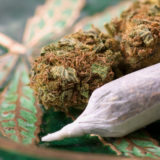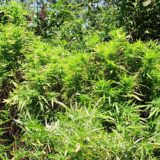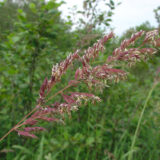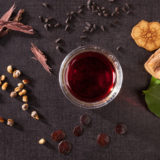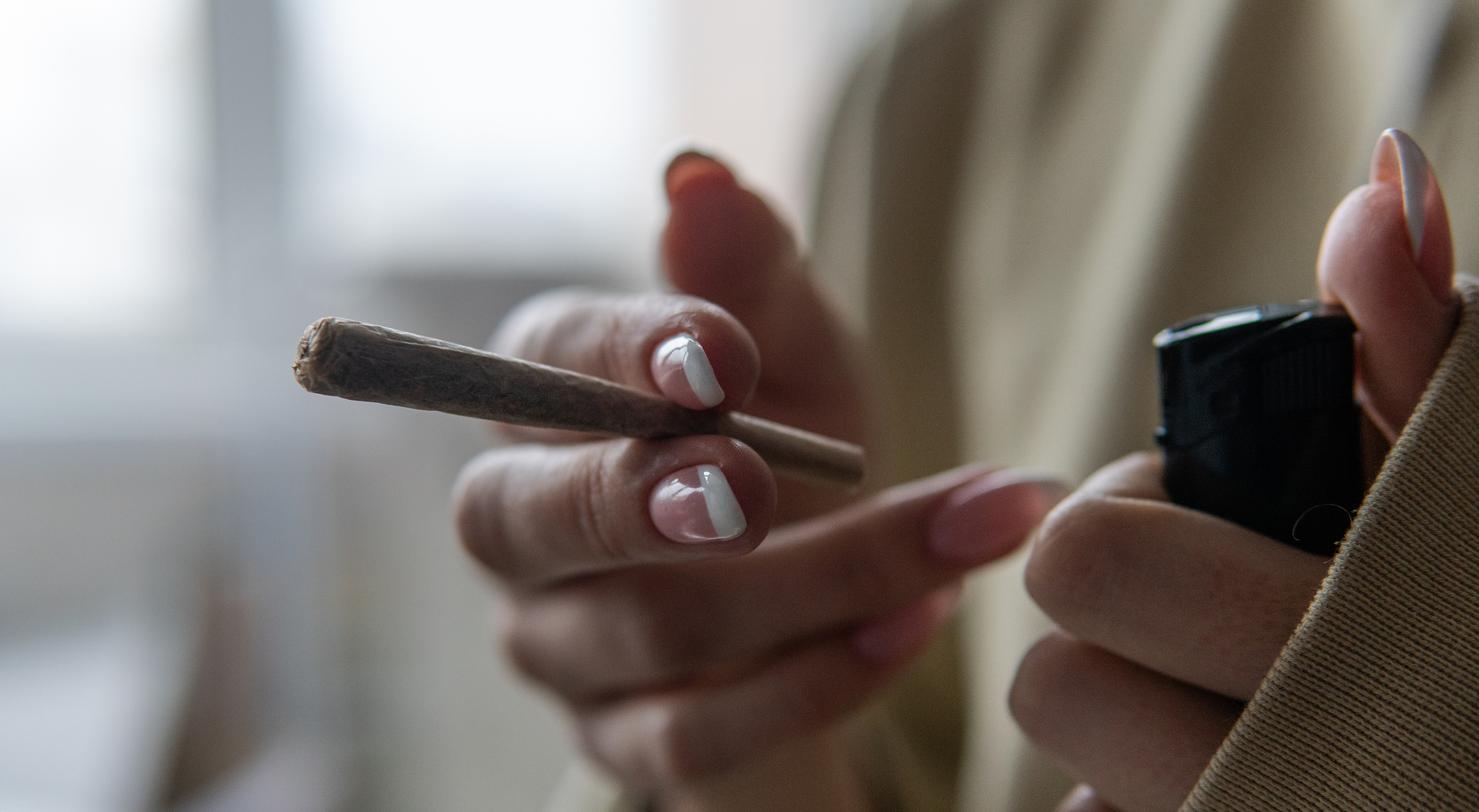
Table of Contents
Best Natural, Legal Weed Alternatives in 2020
Are There Natural Substitutes for Weed?
The volatility of the marijuana industry has always been well-known. Almost anyone who uses weed on a regular basis would agree there are some dry spells where marijuana simply cannot be found. These stretches of time without having a stash can become considerable inconvenient. There are also marijuana users who are unable to get their cannabis intake for a variety of other reasons (traveling and living in a prohibition zone to name a couple). It is extremely logical that these individuals would be looking for a marijuana substitute which is safe, reliable, cost-effective, and legal.
Obviously, weed provides a very unique high, however, there are most certainly alternatives to marijuana which actually work.1 In fact, there are so many real substitutes for weed that work, there are at least a couple plants per continent. These plants also typically have significant ceremonial, religious, or cultural history. Some of them are meant for combustion (to be smoked), while there are others that can be vaped, brewed into a tea, or turned into an extract.
Warning: Botanical Shaman strongly discourages the use of synthetic marijuana (such brands as K2 or Spice herbal incense). These types of products are relying on dangerous, unreliable chemicals to get a user a brief, scary high. The products usually involves spraying the chemical on some real herbs (such as Damiana), which are then smoked like weed. Botanical Shaman cannot stress enough how dangerous synthetic marijuana can be and instead encourages considering natural plants which have been well studied and produce safe effects similar to cannabis.
Comprehensive List of the Best Natural Alternatives for Marijuana in 2020
Although there are more than 390,000 identified species of plants around the world. There are far fewer which have psychoactive properties. And there are even fewer with psychoactive properties which are similar to marijuana. This is a list of the current best substitutes for marijuana in 2020 which are legal, safe and natural.
#1 BLUE LOTUS FLOWER
Nymphaea caerulea
Method of Use: Smoked, Brewed into a Tea, Vaped
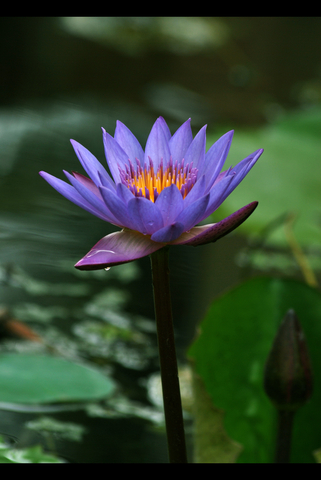
Blue Lotus Flower is native to some of the tropical and moderate temperament zones of the globe. It is most commonly associated with the Nile river and Egypt, holding a strong ceremonial and religious background throughout the history of Egyptian culture. It has been considered a sacred plant for thousands of years in the region. The sacred lily is also supposed to possess a special link to the Egyptian deities.3 Blue Lotus is commonly brewed as a tea or smoked, both of which have been present throughout various cultural and religious histories. It is commonly accepted that Blue Lotus tea is a more efficient (and powerful) way to consume the lily, however, plenty of people have enjoyed normal combustion (smoking the herb) with great effects.
Smoking or vaping Blue Lotus Flower provides a spike in activity-interest, a light euphoria, and a mild relaxation effect. The effects of Blue Lotus are often more powerful as a tea, providing a relaxing and calming sensation. A lot of shaman have used Blue Lotus Flower to induce trances and improve meditation, astral travel, and prophetic dreaming.
Finding a quality Blue Lotus Flower that will actually maintain the psychoactive properties of the plant throughout harvest and storage can be difficult. Jolly Lotus is one of the best brands of Blue Lotus Flower, and has been around for a few years.
#2 WILD DAGGA (aka Lion’s Tail)
Leonotis leonurus
Method of Use: Smoked Brewed into a Tea
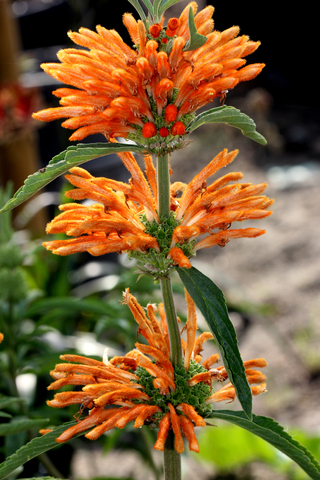
Wild Dagga is native to various regions of Africa and has been used for thousands of years. It can grow in most subtropical or Mediterranean climates. Still, it was only first introduced to Western culture in the 1600s. Typically, Wild Dagga is smoked, or brewed into an herbal infusion. It is very common for Wild Dagga to be used in African cultures as a substitute for weed. It is interesting to note that the term “dagga” is a derivative of indigenous South African Hottentot tribal word “dachab”, which means cannabis.2 It is typically smoked or brewed into one of many liquid concoctions (teas included).
Wild Dagga has recently claimed the title for the best natural marijuana alternative, however, the quality of the harvest and packing of the flower is important. Like actual marijuana, it is also important to obtain the freshest flowering buds of the Wild Dagga plant. The dried leaves and buds provide a very calming and relaxing effect when being smoked. Wild Dagga users typically report mild euphoria, happiness, relaxation, and other effects similar to cannabis.
The more premium Wild Dagga harvests will provide the best effects. When the plant is harvested fresh and stored properly, the psychoactive constituents are better preserved and more potent.
#3 KAVA KAVA
Piper methysticum
Method of Use: Powder, Capsules, Brewed into a Tea or Concentrate
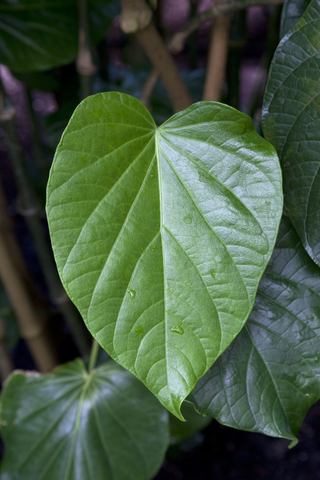
Kava is native to the South Pacific regions of the world. Although it is a member of the black pepper family, it is still psychoactive. It is also known as ‘awa and is very commonly used as a social drink in the place of alcohol. And despite being non-alcoholic, there are many regions of the world which boast “Kava Bars” instead of normal bars which serve alcohol.4 Traditionally, Kava is crushed and/or ground into a powder. In most ancient cultures (and in some indigenous regions of the world today), the root is chewed to increase surface area, and then sometimes stomped on in a large pit until it is a more finely mashed substance.
Although kava can be ingested directly as a powder, it is possible to brew concentrates, extracting the kalvactones. It is also possible to create herbal teas with Kava. Usually, it is done by bringing 4-6 cups of water to a light simmer, combining the desired amount of the powdered root. Most people seem to simmer the powder for anywhere between 15 and 25 minutes. The longer the root is simmered, the more concentrated the resulting concoction.
Kava Kava is known to produce very light euphoria, when consumed in large quantities or in concentrate form. While it is no where near as strong as other options, or marijuana itself, it is very frequently used for it socially relaxing properties.
Kalm With Kava is probably one of the best brands for Kava Kava. Their Kava Concentrate is fairly decent stuff, however, it admittedly does not taste very good! Still, it most certainly has the highest concentrate of kalvactones. Additionally, the company has been around for a long time.
Warning: Kava Kava has been known to cause Jaundice and other liver problems when used in excess.
#4 DAMIANA
Turnera diffusa
Method of Use: Smoked, Brewed into a Tea
Damiana is native to numerous parts of North, Central, and South America. It is also prevalent throughout the Caribbean. It is well known for its sweet smell and has a history of being used in a number of liquors, especially Mexican liquors. It is also well known to have been used in the original margarita recipe. Even the Coca Cola company has made use of Damiana in its earlier days of producing alcoholic beverages.5
Some people consider Damiana to be a bit of an aphrodisiac, however, it is more commonly used as a marijuana substitute.6 The effects of smoking damiana are reported to be like smoking a very weak form of marijuana. The high does not appear to last nearly as long as actual cannabis, however, it is possible to achieve stronger effects by brewing a quick batch of Damiana tea (bring water to a simmer, add the herb, then strain after a bit).
Fresh Damiana is important in achieving any sort of psychoactive effect. Another benefit of choosing Damiana as a marijuana substitute is the pleasant aroma. This is why Damiana is often combined with marijuana or tobacco to improve the flavor and smell of any sort of spliff.
#5 AZTECA CALEA ZACATECHICHI
Calea ternifolia
Method of Use: Brewed into a Tea, Smoked

Azteca Calea Zacatechichi has a long history of use throughout the Ancient Aztec culture, Mexico, and Central America. It was used by shaman to induce premonitions and meditation. It has been used to enhance dreaming and help the user better remember their dreams. It also helps one achieve a greater understanding of their dreams and their meanings.7
The effects of smoking Azteca Calea Zacatechichi are much faster than brewing a tea, however, they are shorter lived. The herb is smoked for its relaxation and calming effects. When brewed into a tea, it is a lot more concentrated and very strong, however, is more commonly used to produce lucid dreaming.
#6 SIBERIAN MOTHERWORT
Leonurus sibiricus
Method of Use: Smoked, Vaped
Siberian Motherwort is very frequently referred to as “Little Marijuana” for its use as a commonplace substitute for actual marijuana. It is most prevalent throughout its native regions of China, India, Mongolia, and Siberia. Generally, the herb is smoked, however, it most certainly has been blended with other similar herbs (such as some of the herbs on this list or tobacco), to increase the effectiveness.
The Little Marijuana can produce mildly relaxing effects, very similar to marijuana but far weaker. Typically, Siberian Motherwort smokers will consume much more of the substance in comparison to a how much weed a marijuana smoker will consume. Simply put: it is dramatically weaker than actual cannabis.8 Still, it is enjoyed by many cultures around the world and a very popular alternative.
#7 WILD LETTUCE
Lactuca virosa
Method of Use: Smoked, Brewed into a Tea
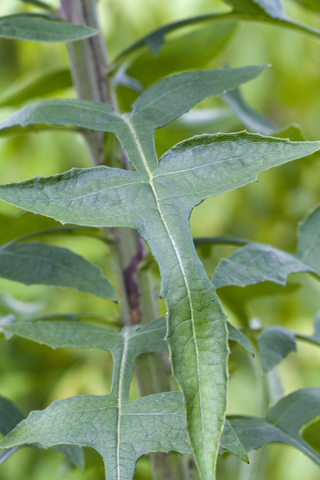
Wild Lettuce is native to Europe, North America, and the Middle East. It is also commonly called “Opium Lettuce.” The leaves and herbage are used to produce a milky substance called “lactucarium.” As the substance dries, it is known to simulate mild opium-like effects which are more frequently compared to a weak marijuana strain. Brewing a Wild Lettuce tea is a long time favorite of shaman and spiritualists seeking lucid or more vivid dreams. It was also very commonly used in a variety of traditional medicines for its analgesic properties.9
Wild Lettuce is known to produce pain relieving and sedative like effects when smoked or brewed into a tea. Like most of the herbs on this list which can be both smoked and brewed, the herbal tea version of Wild Lettuce is going to be more powerful. It is possible to purchase Wild Lettuce extracts, which are arguably the strongest version of the substance, however, they are very inconsistent and some are so weak no effects can be felt at all.
While many of these herbs have significant religious history in their respective cultures, they all have been recognized for their use as a marijuana substitute.
A Few Words About CBD
Cannabidiol (also known as CBD) has been sky rocketing in popularity in recent years. Some people add CBD to their daily regimen, their after workout smoothies, or even to their pet’s diets. CBD is the second most prominent active constituent in marijuana (cannabis). Typically though, it is harvested and derived from the close cousin of marijuana, the hemp plant. CBD is not responsible for any psychoactive high, and displays no addictive properties or sign of dependence.10 It does not appear to cause any health problems and is traded as though it were legal in nearly all countries and within all of the United States. There are some general restrictions against the sale, purchase, and use of CBD in some states, but nearly no territory in the United States enforces any of these restrictions (where they do exist).
Although no critical health concerns are associated with the use of CBD, there are some common experiences which are somewhat undesirable. Some of these ailments include fatigue, irritability, and nausea. It can increase the amount of coumadin in the blood, but ultimately so do some very common foods (such as highly acidic grapefruit).11 While the FDA does not typically regulate the safety or quality of CBD products, it is still regularly sold as a supplement.
A Few Words About Synthetic Marijuana (Spice, K2, etc.)
The original creator of the first synthetic marijuana is John W. Huffman, an organic chemist with tenure at Clemson University. Botanical Shaman actually reached out to Huffman in 2013 and requested his opinion on the safety of the substance, to which he admitted it was highly dangerous and should not be consumed. There have been so many reports of seizures and all types of critical delirium while under the influence of any of the JWH or other synthetic marijuana chemicals.12
After the first batch of spice hit the market, China also started mass producing the drug, and it has been banned in many countries around the world. Because it has been easy to replicate and slightly modify the chemical, it is still available even today; and it is perhaps even scarier and more lethal today than ever. Some of the variants of spice include JWH-018, AM-678, HU-210, CP 47,497, JWH-073, JWH-398, JWH-250, Oleamide, and more. Synthetic marijuana (aka Spice) should be avoided at all costs. It is dangerous, addictive, and lethal.
Final Notes on Natural, Legal Weed Substitutes
As long as marijuana has been around, there have been alternatives.13 People assume marijuana is the only psychoactive substance that can provide a quality, relaxing high, however, there are many substitutes for weed. The safest substitutes are the natural herbs which still boast some sort of psychoactive properties (such as Jolly Lotus). It’s always important to obtain the correct part of the plant that has been freshly harvested. Just like marijuana, lower quality harvests and lower quality plants will yield lower quality highs (or no high at all). Finding a high quality, premium harvest herb can be hard, but it is worth the extra effort to ensure the effects are safe and enjoyable.
Sources:
1. Ratsch, C. (1998). The Encyclopedia of Psychoactive Plants. Enthopharmacology and Its Applications. Park Street Press. Rochester, Vermont. pp. 61-89.
2. Rubin, V., (June 3, 2011). Dagga: Cannabis sativa in Southern Africa. Cannabis and Culture. pp 89.
3. Wilkinson, R. H. (2003). The Complete Gods and Goddesses of Ancient Egypt. Thames & Hudson. p. 133.
4. Raband, I. (January 21, 2019). Kava Bars in the US – Why is Kava Taking America By Storm? Bold Business. Retrieved from: https://www.boldbusiness.com/nutrition/american-kava-bars-move-over-coffee/
5. Pendergrast, M., (2000). For God, Country, and Coca Cola: The Definitive History of the Great american Soft Drink and the Company That Makes It. Basic books. pp 27-28.
6. Crasto, A., (2014). US Herbs – Damiana, reported to be an aphrodisiac, stimulate, wood elevator. New Drug Approvals. Retrieved from: https://newdrugapprovals.org/2013/12/10/us-herbs-damiana-reported-to-be-an-aphrodisiac-stimulant-mood-elevator/
7. Raypole, C. (April, 23, 2020). This ‘Dream Herb’ May Be the Key to Unlocking Your Dreams. Healthline. Retrieved from: https://www.healthline.com/health/calea-zacatechichi#dreams-and-sleep
8. Minnesota Wildflowers (2020). Leonurus sibiricus (Siberian Motherwort). Minnesota Wildflowers Field Guide. Retrieved from: https://www.minnesotawildflowers.info/flower/siberian-motherwort
9. Gumprecht T. (1815). On the use of the Lactuca Virosa, in Hooping-Cough. Medico-chirurgical transactions, 6, 608–617. https://doi.org/10.1177/095952871500600125
10. Grinspoon, P., (April 15, 2020). Cannabidiol (CBD) – what we know and what we don’t. Harvard Health Publishing. Harvard Medical School. Retrieved from: https://www.health.harvard.edu/blog/cannabidiol-cbd-what-we-know-and-what-we-dont-2018082414476
11. Grayson, L., Vines, B., Nichol, K., Szaflarski, J. P., & UAB CBD Program (2017). An interaction between warfarin and cannabidiol, a case report. Epilepsy & behavior case reports, 9, 10–11. https://doi.org/10.1016/j.ebcr.2017.10.001
12. Cohen J, Morrison S., Greenberg J., et al., (2012). Clinical Presentation of Intoxication Due to Synthetic Cannabinoids. Pediatrics. 2012:129.
13. Schultes, R., Hofmann, A., and Ratsch, C., (1998). Plants of the Gods, and Their Sacred, Healing and Hallucinogenic Powers. Revised and Expanded Edition. Healing Arts Press. Rochester, Vermont. Pp. 69-98.
Image Credits:
Smoking Joint [ID 144678941 © Kyrylo Vasilev | Dreamstime.com]
Wild Dagga [ID 102426800 © Westhimal | Dreamstime.com]
Blue Lotus [ID 19609452 © Orangedream701 | Dreamstime.com]
Kava Kava [ID 32793820 © Pipa100 | Dreamstime.com]
Azteca Calea Zacatechichi [ID 124857177 © Eskymaks | Dreamstime.com]
Wild Lettuce [ID 156611510 © Kclarksphotography | Dreamstime.com]

